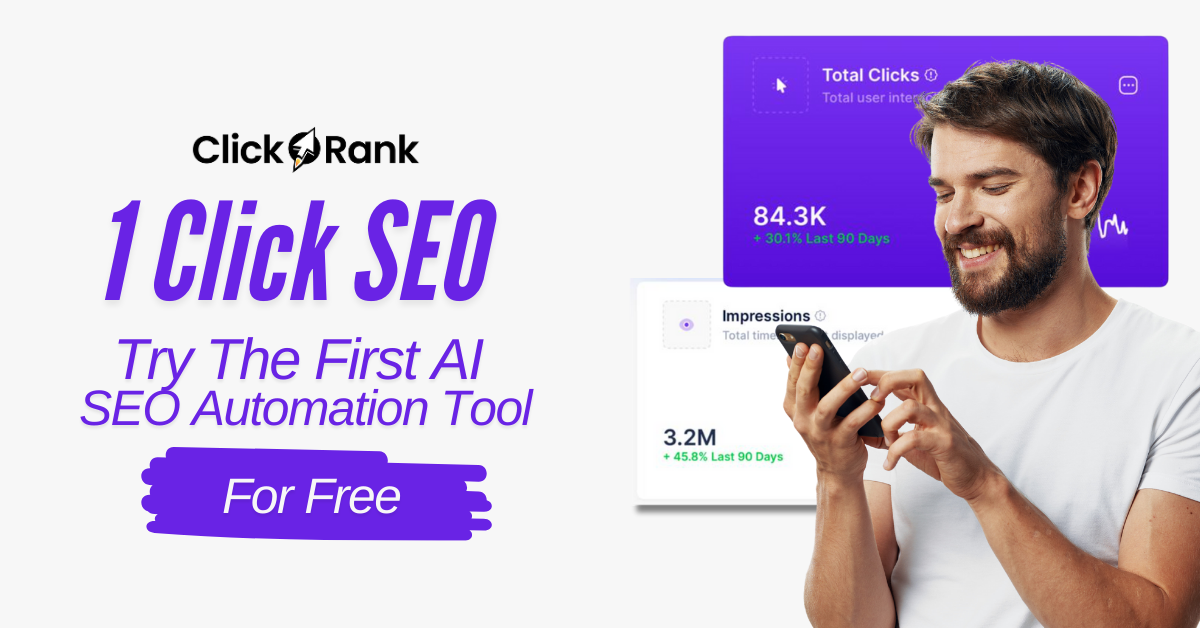Let me tell you—my favorite Los Angeles coffee shop was hidden for two whole years, only a block from my apartment. I Googled every weekend for ‘best coffee near me’ and found that same mega-chain instead. Turns out, that hidden gem wasn’t showing up because their local SEO was basically invisible. If you’ve ever wondered why your own business isn’t getting found right in your backyard, you’re definitely not alone. Let’s pull back the curtain and peek into the not-so-glamorous—but game-changing—world of local SEO.
1. Local SEO Isn’t Just for Tech Geeks: Real-World Stories From LA Streets
Let’s be honest—when you hear “local SEO,” do you picture some tech wizard hunched over a laptop, tweaking code and talking in jargon? Here’s the truth: local SEO isn’t just for tech geeks. It’s for every business owner in Los Angeles who wants to stand out in their own neighborhood. And if you’re running a taco truck, a donut shop, or a cozy boutique, local SEO could be the difference between a slow day and a line out the door.
Real Story: The Taco Truck That Turned Lunchtime Around
Take the story of a taco truck parked near a busy LA intersection. For months, business was steady but nothing special. Then, the owner updated their Google Business Profile—adding fresh photos, accurate hours, and a mouthwatering menu. Within a week, lunchtime crowds doubled. Why? Because now, when hungry folks searched “tacos near me,” the truck popped up at the top of the local search results. That’s neighborhood visibility in action.
Are You Missing Out on 70% of Local Traffic?
Here’s a wild scenario: imagine you’re running a business, but your details aren’t on Google Maps. Research shows up to 70% of users visit a business within a day after a local search. If your info is missing or wrong, you’re practically invisible to people walking or driving right by your door. That’s a huge chunk of local traffic generation—gone.
The Cost of Simple Mistakes
It’s not always about fancy marketing. Sometimes, it’s the basics that matter most. If your online hours are outdated, or your address is off by a block, customers might show up when you’re closed—or worse, never find you at all. Studies indicate that Google delivers billions of local search results monthly, and small errors can send those potential customers straight to your competitors.
How Google Decides Who Makes the List
Ever wondered why some businesses show up first when you search “pizza near me” or “best donuts Highland Park”? Google looks at your Google Business Profile, reviews, and how often your business info matches across the web. The more accurate and active you are, the better your shot at landing in those coveted top spots. It’s not just about being online—it’s about being visible where it matters most: your own neighborhood.
When you dial in your Google Business Profile, you’re basically turning on a neon open sign right in your neighbor’s pocket. – Rand Fishkin
Local SEO: Real-World Revenue, Not Just Web Clicks
Optimizing your online presence—especially your Google Business Profile—isn’t just about getting more clicks. It’s about driving real people to your door, increasing sales, and building a loyal local following. Local SEO boosts real business, not just brand awareness. Even small tweaks can transform your success story on the streets of LA.
Before After Average 50 80 120 Foot Traffic Before & After GBP Optimization

2. Wait, What Is Local SEO Anyway? (Spoiler: It’s Not Magic)
Let’s cut through the digital noise: Local SEO isn’t some mysterious tech wizardry. It’s actually pretty simple. At its core, the Local SEO definition is this—getting your business noticed in location-specific Google searches. Think about it: when someone types “best tacos near me” or “yoga studio in Echo Park,” they’re not looking for a business across the country. They want something close by, right now. That’s where local search engine optimization comes in.
So, what does this actually mean for you, running a business in a sprawling city like Los Angeles? It means that if you’re not showing up in those local searches, you’re missing out on real, ready-to-buy customers who are literally around the corner. Research shows that up to 70% of users visit a business within a day after a local search. That’s a lot of potential foot traffic walking right past your door—unless you’re visible in those search results.
Local SEO Guide: The Basics (No Magic Wand Required)
Here’s the quick-and-dirty local SEO guide you actually need:
- Google Business Profile: This is your digital storefront. Claim it, fill it out, and keep it updated. Google uses this info to decide who shows up on Maps and in the “local pack.”
- NAP Citations: That’s your Name, Address, and Phone number. Make sure they’re consistent everywhere—on your website, directories, and social media. If Google sees different info in different places, it gets confused (and so do your customers).
- Reviews: Local customers trust reviews. Encourage happy customers to leave them, and always respond—good or bad. It shows you care and helps boost your visibility.
- Local Keywords: Sprinkle in those neighborhood names and local phrases people actually use. “Vegan bakery in Silver Lake” will get you a lot further than just “vegan bakery.”
How Is Local SEO Different from ‘Regular’ SEO?
Here’s where things get interesting. Regular SEO is about showing up for broad searches—think “best pizza” or “affordable accountant.” But local SEO zooms in on your specific area. It’s all about connecting with people searching for what you offer, right in your neighborhood. In a city as massive (and competitive) as Los Angeles, those local keywords and neighborhood signals matter more than ever. If you want to stand out in, say, Silver Lake or Koreatown, you need to speak the language of your block, not just your industry.
Tangent: How My Friend’s Bookstore Won Over Silver Lake
Let me tell you a quick story. My friend opened a tiny bookstore in Silver Lake. At first, she barely got any foot traffic. Then she optimized her Google Business Profile, made sure her NAP citations matched everywhere, and started asking loyal customers to leave reviews mentioning “Silver Lake.” Within weeks, she started popping up on Google Maps for “bookstore near me.” Suddenly, locals who’d never noticed her before were stopping in, just because she showed up in their search. That’s the power of local search engine optimization in action.
Local SEO lets you turn digital shout-outs into foot traffic and loyal regulars. – Joy Hawkins
So, no, it’s not magic. It’s just making sure your business is crystal clear and easy to find for the people who matter most—your neighbors.

3. Missing Out on Local Traffic: Classic Mistakes (And How to Dodge Them)
Picture this: You run a cozy donut shop in Los Angeles. The coffee is hot, the glaze is perfect, but—online—your shop looks “closed.” Maybe your Google Business Profile still lists your old hours, or your address is off by a digit. It’s like leaving the “closed” sign on by accident, except it’s happening on every smartphone in your neighborhood. That’s one of the most common Local SEO mistakes, and it’s costing you real customers.
Let’s break down why these mistakes happen, and more importantly, how you can dodge them. Local SEO optimization isn’t about fancy tricks or chasing the latest digital trend. It’s about getting the basics right so your business shows up when it matters most—when someone nearby is searching for exactly what you offer.
Classic Local SEO Mistakes (You Might Be Making Right Now)
- Wrong or inconsistent info: Your business name, address, and phone number (NAP) need to match everywhere—Google, Yelp, Facebook, you name it. If they don’t, Google gets confused, and so do your customers.
- No reviews or ignoring them: People trust reviews. If you have none, or you never respond, it looks like you don’t care. That’s a red flag for anyone searching.
- Keyword stuffing: Trying to cram every possible keyword into your listing or website? Google’s smarter than that. It wants real, helpful info, not a jumble of search terms.
- Weak mobile site: Most local searches happen on phones. If your website is slow or hard to use on mobile, people bounce—and Google notices.
Truth Time: Voice Search Is the 2025 Mistake You Can’t Afford
Here’s the thing: Voice search isn’t just a trend. Research shows it’s becoming a huge part of how people find local businesses. If your info isn’t optimized for “near me” searches or natural language questions, you’re invisible to a growing crowd. Local SEO trends for 2025 point to voice search and mobile-first indexing as must-haves, not nice-to-haves.
Pro Tip: Consistency Beats Cleverness
It’s tempting to chase the latest hack, but the real secret to Local SEO optimization is consistency. Make sure your business hours, address, and phone number are up-to-date everywhere. Double-check your Google Business Profile regularly. Respond to reviews—even the tough ones. These simple steps build trust with both Google and your community.
Your online presence is your new front door. If it’s locked, don’t expect anyone to knock. – Greg Gifford
Being locally visible isn’t about digital wizardry. It’s about showing up, being accurate, and making it easy for people to find you—right when they need you. Studies indicate that businesses who nail these basics see more foot traffic, more calls, and more sales. Don’t let classic Local SEO mistakes keep your business hidden in plain sight. The neighborhood is searching. Will they find you?

4. Outranking Goliaths: Realistic Local SEO Strategies for Small LA Businesses
Let’s be honest—competing with big brands in Los Angeles can feel like trying to outshine the Hollywood sign with a flashlight. But here’s the secret: Local SEO strategies give you a real shot at standing out, right in your own neighborhood. You don’t need a massive budget or a team of marketing wizards. You just need to get a little creative, a little local, and a lot more personal.
How a Family Florist Beat the Big Guys
Imagine a family-owned florist shop in Silver Lake. They’re surrounded by national chains with huge advertising budgets. But instead of trying to outspend them, this florist got hyper-local. They used local keywords like “Silver Lake birthday flowers” and “Echo Park wedding bouquets.” They asked happy customers to leave honest reviews on Google. Suddenly, when someone nearby searched for flowers, the family shop popped up first—not the corporate chain. That’s the magic of Local SEO for small businesses.
Simple Steps You Can Take Today
- Claim your Google Business Profile (formerly Google My Business). This is your digital storefront. Fill it out completely, add photos, and keep your info up to date.
- Talk to satisfied customers and ask for reviews. Research shows reviews not only build trust but also boost your search ranking.
- Add local keywords naturally to your website and business listings. Think about how people in your area actually search for what you offer.
- Join neighborhood online forums or Facebook groups. Answer questions, share tips, and become part of the local conversation.
The “Hidden Menu” Trick
Want to create some buzz? Try the “hidden menu” trick. Offer a special deal or product just for locals—then promote it online. Maybe it’s a “Silver Lake Special” coffee blend or a “locals-only” discount. People love feeling like insiders, and word-of-mouth will spread fast.
2025 Wild Card: AI-Powered Search
Here’s where things get interesting. By 2025, local SEO will be all about real-time, AI-driven strategies. That means search engines will get even better at understanding what people want, right when they want it. To stay ahead, craft your listings and website with real-life language. Use phrases your customers actually say. This helps AI connect your business with local intent, especially as voice searches and mobile searches keep growing.
In today’s digital LA, showing up for your own block is worth more than chasing downtown billboards. – Lily Ray
Studies indicate that optimizing your Google Business Profile, collecting authentic reviews, and using neighborhood-specific keywords are the most effective Local SEO strategies for small business growth. Local keywords increase your relevance for hyper-local searches, while reviews boost trust and ranking. And remember, you don’t have to outrank the world—just your own block.
So, if you’re ready to stop getting lost in the LA crowd, start with these local SEO for small businesses steps. You might just find yourself outranking the goliaths, one neighborhood at a time.

5. The Future of Local SEO (And Why LA’s Next Big Trend Isn’t a Secret Club)
Let’s be honest—if you run a business in Los Angeles, you know how easy it is to get lost in the crowd. There are new shops, services, and pop-ups on every corner. So, how do you make sure your neighbors actually find you? Here’s the truth: Local SEO is the new handshake on the block. If people can’t even spot you online, you’re not really “in” the neighborhood, no matter how cool your brand is.
But what exactly is local SEO? In simple terms, it’s the art (and science) of making your business show up when someone nearby searches for what you offer. Think “coffee shop near me” or “best hair salon in Silver Lake.” Local SEO helps you pop up on Google Maps, in local listings, and in those crucial top spots when someone’s ready to buy. It’s not about chasing viral fame or trying to impress the whole internet. It’s about being visible to the people who are actually close enough to walk through your door.
Now, here’s where things get interesting. Local SEO trends for 2025 are changing fast. Research shows that mobile-first searches and voice-activated queries are set to dominate local search traffic. That means more people will be asking their phones, “Where’s the best taco in Echo Park?” or “Find a plumber open now in West LA.” If your business isn’t optimized for mobile or voice search, you could be invisible—no matter how great your reviews are.
AI-powered results are also becoming the new normal. Google and other search engines are getting smarter at understanding what people really want, not just what they type. So, your local SEO strategy needs to keep up. That means making sure your business info is accurate everywhere, from your Google Business Profile to your website and social media. Even tiny slip-ups—like an old phone number or a misspelled street name—can leave you out of the loop. Double-check your details often, because in LA’s fast-moving digital world, mistakes mean missed opportunities.
Here’s the kicker: while digital trends come and go, the importance of local SEO never fades. Getting found by your neighbors will always matter more than going viral for a day. As one expert put it:
Local SEO is how you become the neighborhood legacy, not just another digital ghost. – Mike Blumenthal
So, as you look ahead, remember this: the future of local SEO isn’t some secret club. It’s about staying visible, relevant, and connected to the people right outside your door. Whether you’re a bakery in Highland Park or a yoga studio in Venice, investing in local SEO services and keeping up with local SEO features is how you’ll thrive in 2025 and beyond. Don’t let your business get lost in LA’s digital maze—make sure your neighbors can always find you, right when it matters most.
TL;DR: If you run a business in Los Angeles, local SEO is your secret map to being found by actual neighbors. Take the time to optimize your online details and your shop could be the next local favorite—no secret handshake required.
You may be interested

